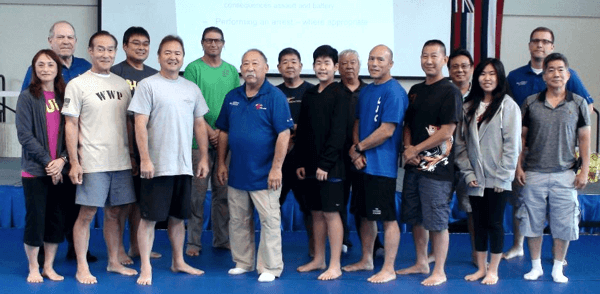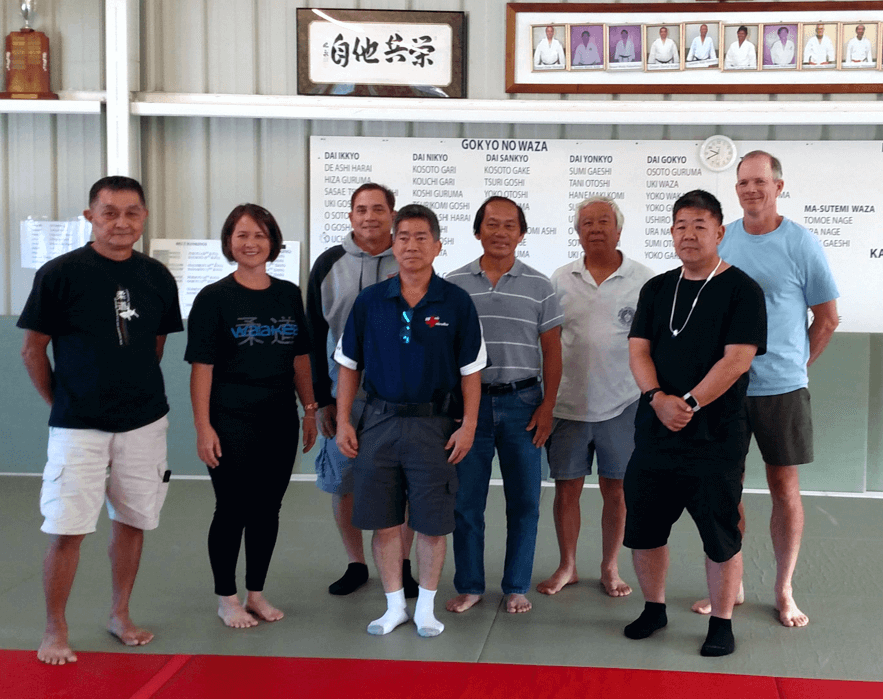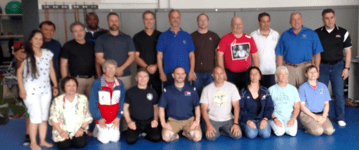The Self Defense Committee has been assisting several Yudanshakais in launching their own self defense committees. Over that last three years, the Committee has offered grants to Yudanshakais through the development committee to launch programs. Several Yudanshakias worked together to develop their self defense programs and curricula to help consolidate resources. Many of the smaller Yudanshakais did not have the resources to start a new committee so they chose to work together to have a self defense program.
The last two Yudanshakai grants were utilized in May (by the two Hawaii Yudanshakais) and in June (by Shufu). There were a total of 21 participants in the three Hawaii workshops (13 in Oahu and 4 in Kona for the two certification classes and 4 in the Kona re-certification class). Shufu had 19 in its certification class and will have a follow-up re-certification class at a later date. All three organizations recognized the opportunity a self defense program could offer them in order to bring new members into judo.
 Oahu Workshop Attendees
Oahu Workshop Attendees
 Kona Workshop
Kona Workshop
 Shufu workshop
Shufu workshop
Shufu President Roy Englert sent out the following email which summarized the event well.
On the heels of a very successful self-defense instructors’ clinic, it may be worth clarifying what we are doing and why.
It is Shufu’s leading goal, as determined by the black belts at a retreat held a couple of years ago, to grow judo. Bringing people into judo through their interest in self-defense is one under-used path.
As every instructor knows, it is important for a dojo to maintain insurance coverage. The USJF self-defense program is the product of negotiations between USJF and our insurance carrier to make sure that there is agreement on how a dojo can incorporate techniques beyond IJF shiai judo and retain coverage.
There are techniques — including de-escalation and situational awareness, not just waza — that can be taught in a one-day seminar to help people defend themselves in common situations, and presenting those techniques can be a public service as well as a gateway to judo. But anyone interested in waza useful in self-defense needs to learn the waza over a period of time and practice them so that they become part of muscle memory. And that is where we judoka can set up a win-win situation, gaining judo students and providing those students with something they want.
The clinics that USJF puts on are not waza clinics. The waza we should teach are existing judo waza (including atemi waza used in the self-defense katas such as kime no kata, koshiki no kata (added) and Goshin Jutsu). The goal of clinics is to explore ways to teach self-defense through the waza we already know, and to learn more about common situations calling for self-defense and about de-escalation and escape techniques, all taking into account learning from neuroscience and other fields of study. The team USJF sends out to the Yudanshakai for this purpose includes a police officer, a lawyer, and a former USJF President familiar with relevant scientific learning as well as strategic planning.
The Self Defense Committee has introduced 17 Yudanshakais to the USJF Self Defense Process. The Committee will now transition into an oversight role for the program, which will include continued outreach to the Yudanshakais with support and guidance, creation of different additional training opportunities, Continuing Education Unit development, overall program coordination, and when asked provide specific Self Defense Training classes.
The Committee is also in the process of establishing a website for the general public as well as having a private section for trainers, teachers and assistant teachers. This private section will contain information that can be used by the certified members as well as a discussion forum so specific issues can be discussed.
